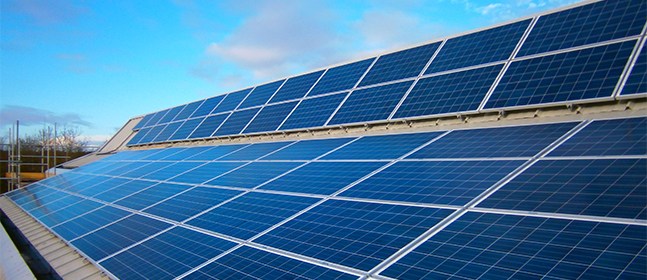
An installation at Sandwell Valley is one of seven to have been completed by Solarsense for RSPB, with the installer claiming “the future is really bright for renewables”. Image: Solarsense
Solarsense has revealed details of the completion of a series of commercial rooftop solar installations earlier this year for the Royal Society for the Protection of Birds (RSPB) at a number of its nature reserves.
The installations took place as part of a programme to reduce the RSPB’s carbon footprint and vary in size across the seven sites. In total the project has increased RSPB’s solar capacity by 104.78kWp and is expected to deliver 88MWh of annual output.
The sites are spread around the UK, ranging from locations in Devon all the way up to Scotland. The largest installation took place at Newport Wetlands in Wales, where a 23.4kW system was installed, while the smallest (4.68kW) was installed at the West Sedgemoor, Somerset.
According to a spokesperson from Solarsense, the range of projects made coordination and the logistics of the installations the biggest barriers to overcome, particularly as they were all completed on a tight timeline before the January feed-in tariff cut-off.
The various locations meant the installer had to liaise with a number of different DNOs and contend with different planning issues at each, while access to the nature reserves also proved challenging in some cases.
“A lot of careful planning, an experienced design team and good communication made all of this possible,” the spokesperson said.
The completed project portfolio is the latest example of the diverse range of businesses looking to solar to provide a range of benefits to their operations. In this case, the RSPB was primarily driven by climate change concerns and wider adoption of renewable energy, nonetheless financial aspects were also a key consideration, with the RSPB benefiting from the previous FiT rates.
While the reduction in these has made solar a more challenging proposition for many businesses, the technology remains well suited to meet the objectives of commercial clients.
The Solarsense spokesperson added: “The market did suffer after the FIT cuts however they are settling now as the market is maturing and businesses are beginning to look at the overall benefits rather than just FIT payments.
“Energy security, fixing energy prices for the foreseeable future, continuity of supply and 'greening' are becoming more and more important to companies, especially as time moves forward.”
Due to continuing falls in panel prices and other cost-cutting factors, Solarsense believe the return on investment for clients remains in a similar range to those before the cuts. The company believes this means businesses can overlook the negativity of falling tariffs.
David Snape, head of sales and marketing at Solarsense, added: “We still see a typical payback for our clients of six to nine years, and PV systems have a lifetime of 30 plus years.
“We believe the future is really bright for renewables, particularly in the commercial sector. Energy is increasingly being prioritised at boardroom level because of a number of factors… the door is open for renewables providers – we just have to push it.”
